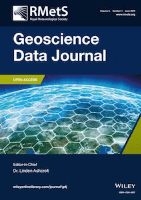
Geoscience Data Journal
Scope & Guideline
Connecting researchers to the pulse of our planet.
Introduction
Aims and Scopes
- Data Rescue and Preservation:
A core aim of the journal is to promote the rescue and preservation of historical geoscience data, including weather records, sea level measurements, and geological observations, ensuring that valuable information is not lost. - Open Data Initiatives:
The journal supports open data initiatives by publishing datasets that are freely accessible to researchers and the public, encouraging collaborative research and transparency in scientific methodologies. - Interdisciplinary Data Integration:
A consistent focus is placed on integrating datasets from various geoscience disciplines, facilitating multidisciplinary research that can address complex environmental challenges. - High-Resolution and Global Datasets:
The journal frequently publishes high-resolution datasets and global compilations that provide detailed insights into specific geophysical phenomena, climate patterns, and environmental changes. - Methodological Innovation in Data Collection:
There is an emphasis on innovative methodologies for data collection, including remote sensing, citizen science, and advanced computational techniques, which enhance the quality and applicability of geoscience data.
Trending and Emerging
- Climate Change and Environmental Monitoring:
There is a marked increase in datasets related to climate change impacts, monitoring environmental changes, and adaptation strategies, reflecting the urgent need for data-driven insights into climate-related issues. - Automation and Advanced Data Processing Techniques:
The emergence of automation in data collection and processing techniques is gaining traction, with papers focusing on automated systems for data rescue and analysis, reflecting advancements in technology. - Citizen Science Contributions:
The involvement of citizen scientists in data collection and the publication of datasets generated through these efforts is on the rise, highlighting the growing recognition of community engagement in scientific research. - Integration of Big Data and AI:
There is an increasing trend towards utilizing big data analytics and artificial intelligence in geoscience research, with datasets that leverage these technologies for improved analysis and interpretation. - Interdisciplinary Collaborations:
Emerging themes indicate a stronger emphasis on interdisciplinary collaborations that combine geoscience with fields such as social sciences, health, and urban planning to address complex global challenges.
Declining or Waning
- Historical Geophysical Observations:
Although historical data remains important, the frequency of publications focused solely on historical geophysical observations appears to be decreasing, as researchers shift towards contemporary data collection and analysis methods. - Regional Focused Datasets:
There is a decline in the publication of datasets that are narrowly focused on specific regional studies, as the journal increasingly emphasizes global datasets that can provide broader insights across multiple regions. - Traditional Geological Surveys:
The emphasis on traditional geological survey datasets is waning, with a growing preference for innovative and technology-driven data collection methods, such as remote sensing and machine learning.
Similar Journals

International Journal of Research & Method in Education
Pioneering new pathways in educational research and methods.The International Journal of Research & Method in Education, published by Routledge Journals, Taylor & Francis Ltd, stands at the forefront of educational research, providing a platform for innovative methodologies and critical discussions within the field. As reflected in its prestigious Q1 category ranking in education for 2023 and its impressive Scopus rank of 301 out of 1543, the journal is recognized for its influential contributions to educational theory and practice. With a focus on rigorously assessing research methods and promoting evidence-based learning, this journal addresses a wide array of topics relevant to researchers, educators, and policymakers. Although it does not currently offer open access options, its extensive reach and robust peer review process ensure that published articles reflect the highest standards of scholarship. Researchers and professionals alike will find invaluable insights that advance understanding and application in the ever-evolving landscape of education.

Bioinformatics Advances
Exploring the Intersection of Biology and TechnologyBioinformatics Advances, published by Oxford University Press, is an esteemed academic journal that serves as a vital platform for the dissemination of innovative research in the rapidly evolving fields of bioinformatics and computational biology. With a promising E-ISSN of 2635-0041, this journal has made significant strides since its inception in 2021, achieving a commendable Q1 ranking in both the Computer Science Applications and Genetics categories, alongside respectable Q2 rankings in Molecular Biology and Structural Biology as of 2023. Though currently not an open-access publication, its critical insights cater to an audience keen on advancing knowledge and technology in genomic studies and data analytics. The journal emphasizes high-quality research and aims to facilitate the integration of computational techniques within biological sciences, making it an essential resource for researchers, professionals, and students alike who seek to stay at the forefront of bioinformatics advancements.

DOKLADY EARTH SCIENCES
Bridging Gaps in Earth Science UnderstandingDOKLADY EARTH SCIENCES is a reputable journal published by MAIK NAUKA/INTERPERIODICA/SPRINGER, focusing on the dynamic field of Earth and Planetary Sciences. With an ISSN of 1028-334X and E-ISSN 1531-8354, this journal offers a platform for researchers to disseminate their findings and insights that contribute to our understanding of Earth systems over a continuous publishing span from 1998 to 2024. It currently holds a Q3 quartile ranking in the Earth and Planetary Sciences category, reflecting an emerging yet significant impact within its field, evidenced by its Scopus ranks where it stands at 123rd in general Earth sciences and 113th in miscellaneous Earth sciences. DOKLADY EARTH SCIENCES aims to bridge research gaps and foster collaboration among a diverse audience including researchers, professionals, and students committed to advancing knowledge in geoscience. The journal stands as a vital resource for those seeking to explore contemporary challenges and innovations within the realm of Earth sciences.

Data
Empowering research in Computer Science and Information Systems.Data is an innovative open-access journal published by MDPI, dedicated to advancing research and knowledge in the fields of Computer Science and Information Systems. Since its inception in 2016, Data has positioned itself as a prominent platform for disseminating high-quality research, currently boasting an impact factor reflective of its rigorous peer-review process and academic standards. Situated in Switzerland, the journal encompasses a broad scope of topics, making it an essential resource for researchers, professionals, and students alike. With a notable standing in multiple categories—including Q2 rankings in Information Systems and Information Systems and Management—the journal facilitates access to cutting-edge findings and methodologies that drive innovation in data management and analysis. Scholars are encouraged to utilize this open-access platform to share their findings and contribute to the collective understanding in these rapidly evolving fields.
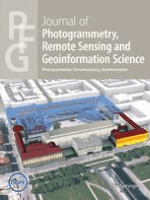
PFG-Journal of Photogrammetry Remote Sensing and Geoinformation Science
Empowering Global Collaboration through Open AccessPFG-Journal of Photogrammetry Remote Sensing and Geoinformation Science, published by Springer International Publishing AG, stands as a prestigious peer-reviewed journal at the intersection of cutting-edge technology and the vital disciplines of Earth and Planetary Sciences, Geography, and Instrumentation. With an impressive impact factor and ranking within the Q1 category, this journal regularly publishes innovative research, methodologies, and case studies that drive advancements in the field. As of its converged years from 2017 to 2024, the journal focuses on the latest trends in photogrammetry, remote sensing, and geoinformation science, providing a crucial platform for researchers, professionals, and students alike. Its open access model ensures that findings are widely accessible, fostering collaboration and knowledge dissemination throughout the global scientific community. Located in Switzerland, geographical and technological diversity is embraced, making the PFG Journal an essential resource for those dedicated to exploring the complexities of our planet and contributing to sustainable development.

BIOMETRICS
Connecting Disciplines Through Exceptional ResearchBIOMETRICS, published by WILEY, stands as a prestigious journal that has made substantial contributions across diverse fields, including Agricultural and Biological Sciences, Applied Mathematics, and Biochemistry. With an impressive track record from its inception in 1946 and continuing through to 2024, this journal is recognized for its rigorous peer-reviewed research and high-impact findings, evidenced by its Q1 ranking in various categories such as Medicine and Statistics. Researchers and professionals alike will find a wealth of knowledge within its pages, making it an essential resource for anyone involved in these dynamic and evolving disciplines. While BIOMETRICS does not offer open access, its reputation for delivering high-quality research ensures its continued importance in advancing the scientific ecosystem. For those seeking to stay ahead in their fields, engaging with the latest studies published in this journal is indispensable.
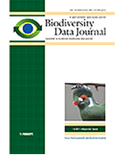
Biodiversity Data Journal
Unlocking the secrets of nature through open-access data.Biodiversity Data Journal, published by PENSOFT PUBLISHERS, is a leading open-access platform that has been facilitating the dissemination of scientific knowledge since its inception in 2013. With a focus on enriching the fields of Agricultural and Biological Sciences, Animal Science and Zoology, Ecology, and Plant Science, this journal plays a pivotal role in promoting research outputs related to biodiversity, encompassing ecological data, species inventories, and conservation strategies. It has achieved commendable rankings in various categories, notably securing a Q2 rating in several key areas, indicating its growing influence within the academic community. The journal’s contribution to advancing the understanding of biodiversity is further enhanced by its commitment to open access, ensuring that vital research findings are widely accessible to researchers, professionals, and students worldwide. By publishing comprehensive datasets and innovative research, the Biodiversity Data Journal remains an essential resource for those looking to stay at the forefront of biodiversity science and environmental stewardship.
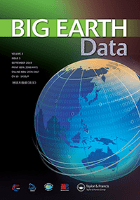
Big Earth Data
Pioneering Research at the Intersection of Earth and ComputingBig Earth Data is a prestigious open-access journal that has been at the forefront of advancing research in the intersection of earth science and computer technology since its inception in 2017. Published by TAYLOR & FRANCIS LTD in the United Kingdom, this journal is dedicated to disseminating groundbreaking findings and innovative methodologies in the fields of Earth and Planetary Sciences and Computer Science Applications. With a commendable impact factor and an impressive positioning in the Scopus rankings—claiming Q1 status in Computers in Earth Sciences and Q2 in Computer Science Applications—it serves as a vital resource for researchers, professionals, and students alike. The journal encourages submissions that explore the integration of big data technologies in managing, analyzing, and visualizing earth-related data, thereby fostering interdisciplinary collaboration. Since embracing its open-access model, Big Earth Data has enhanced the accessibility of high-quality research, promoting a broader dialogue in the scientific community and contributing to informed decision-making in global environmental challenges.

IEEE Geoscience and Remote Sensing Letters
Bridging Disciplines in Earth and Engineering SciencesIEEE Geoscience and Remote Sensing Letters is a distinguished journal published by the IEEE-INST ELECTRICAL ELECTRONICS ENGINEERS INC, focusing on the cutting-edge realms of geoscience and remote sensing. Since its inception in 2004, the journal has maintained a significant role within its field, achieving a robust impact factor that places it in the Q1 category for both Electrical and Electronic Engineering and Geotechnical Engineering and Engineering Geology, reflecting its high-quality research output and influence. The journal is highly ranked in Scopus, securing the 35th position in Earth and Planetary Sciences and the 154th position in Engineering, showcasing its broad academic reach and engagement with current advancements in technology and earth sciences. Although the journal is not open access, it remains accessible to a wide readership, fostering an environment for innovation and knowledge sharing among researchers, professionals, and students interested in remote sensing technologies and geosciences. With its objective to publish concise articles that present significant results and advancements, IEEE Geoscience and Remote Sensing Letters continues to be a vital resource for anyone engaged in these dynamic fields.
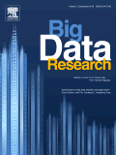
Big Data Research
Empowering innovation through data.Big Data Research, published by Elsevier, is a leading academic journal dedicated to the exploration and advancement of Big Data methodologies and technologies. With an ISSN of 2214-5796, and a commendable impact reflected in its Scopus rankings—ranking Q2 in Computer Science Applications and Q1 in Information Systems—this journal offers a prominent platform for researchers and practitioners to share innovative findings in the realm of data science, analytics, and management. Since its inception in 2014, Big Data Research has fostered a multidisciplinary approach, addressing cutting-edge topics crucial for both academic inquiry and real-world applications. The journal's objectives include advancing the understanding of data-intensive systems, promoting essential methodologies for big data analytics, and enhancing data-driven decision-making processes across various industries. As an open access journal, Big Data Research is committed to disseminating knowledge widely, allowing researchers, professionals, and students to stay at the forefront of developments in this fast-evolving field. Its influence in the academic community is further underscored by a strong commitment to quality and relevance, making it an essential resource for anyone interested in the transformative power of big data.